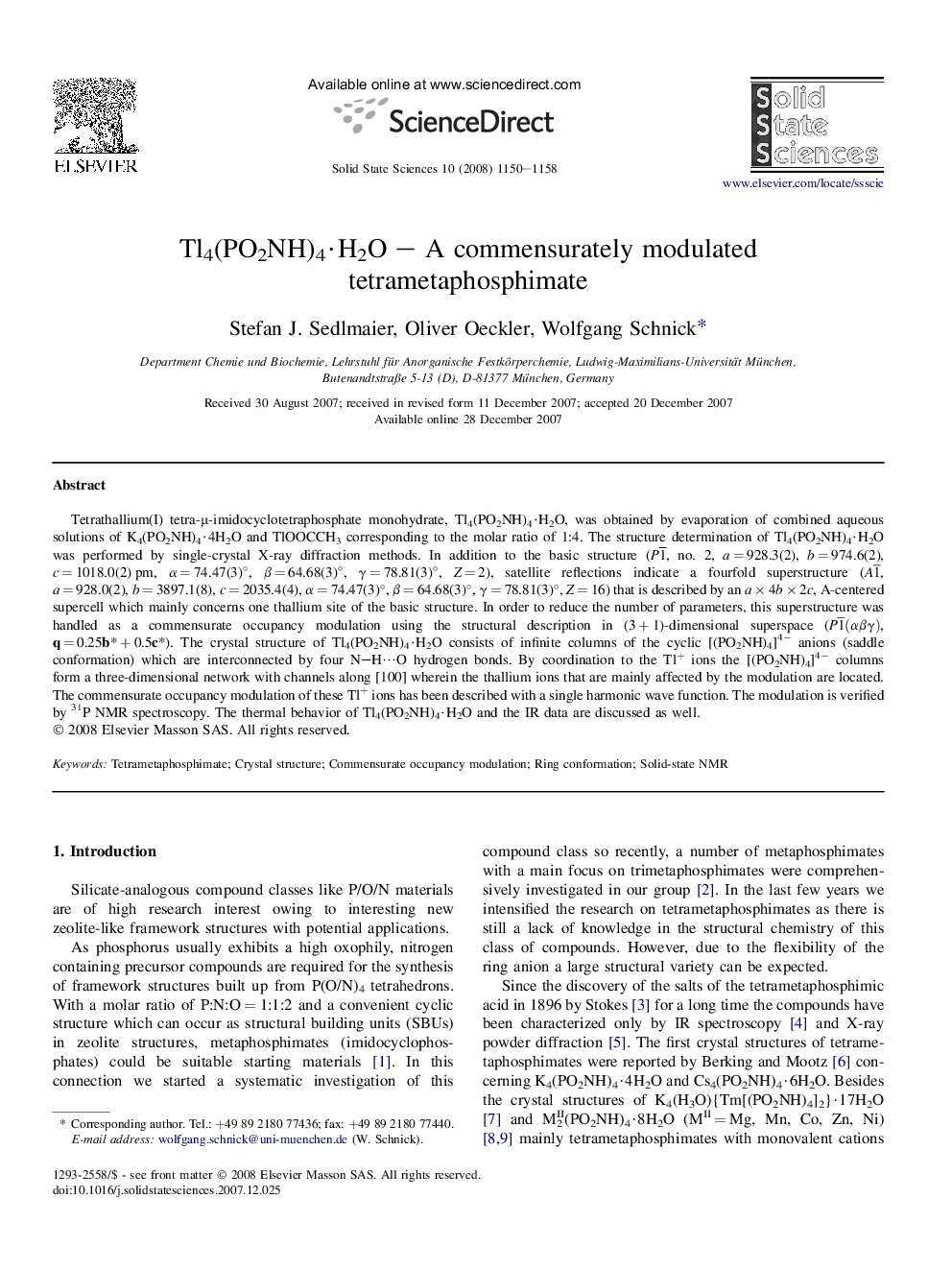| Article ID | Journal | Published Year | Pages | File Type |
|---|---|---|---|---|
| 1506846 | Solid State Sciences | 2008 | 9 Pages |
Tetrathallium(I) tetra-μ-imidocyclotetraphosphate monohydrate, Tl4(PO2NH)4·H2O, was obtained by evaporation of combined aqueous solutions of K4(PO2NH)4·4H2O and TlOOCCH3 corresponding to the molar ratio of 1:4. The structure determination of Tl4(PO2NH)4·H2O was performed by single-crystal X-ray diffraction methods. In addition to the basic structure (P1¯, no. 2, a = 928.3(2), b = 974.6(2), c = 1018.0(2) pm, α = 74.47(3)°, β = 64.68(3)°, γ = 78.81(3)°, Z = 2), satellite reflections indicate a fourfold superstructure (A1¯, a = 928.0(2), b = 3897.1(8), c = 2035.4(4), α = 74.47(3)°, β = 64.68(3)°, γ = 78.81(3)°, Z = 16) that is described by an a × 4b × 2c, A-centered supercell which mainly concerns one thallium site of the basic structure. In order to reduce the number of parameters, this superstructure was handled as a commensurate occupancy modulation using the structural description in (3 + 1)-dimensional superspace (P1¯(αβγ), q = 0.25b∗ + 0.5c∗). The crystal structure of Tl4(PO2NH)4·H2O consists of infinite columns of the cyclic [(PO2NH)4]4− anions (saddle conformation) which are interconnected by four N–H⋯O hydrogen bonds. By coordination to the Tl+ ions the [(PO2NH)4]4− columns form a three-dimensional network with channels along [100] wherein the thallium ions that are mainly affected by the modulation are located. The commensurate occupancy modulation of these Tl+ ions has been described with a single harmonic wave function. The modulation is verified by 31P NMR spectroscopy. The thermal behavior of Tl4(PO2NH)4·H2O and the IR data are discussed as well.
Graphical abstractFigure optionsDownload full-size imageDownload as PowerPoint slide
